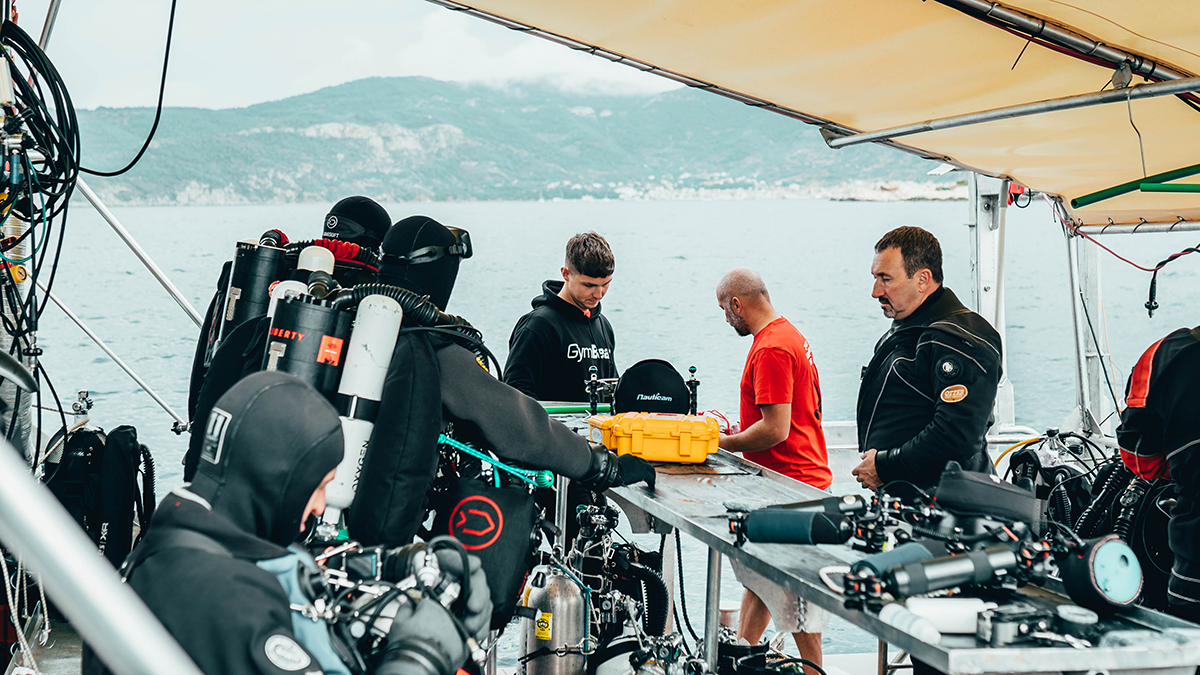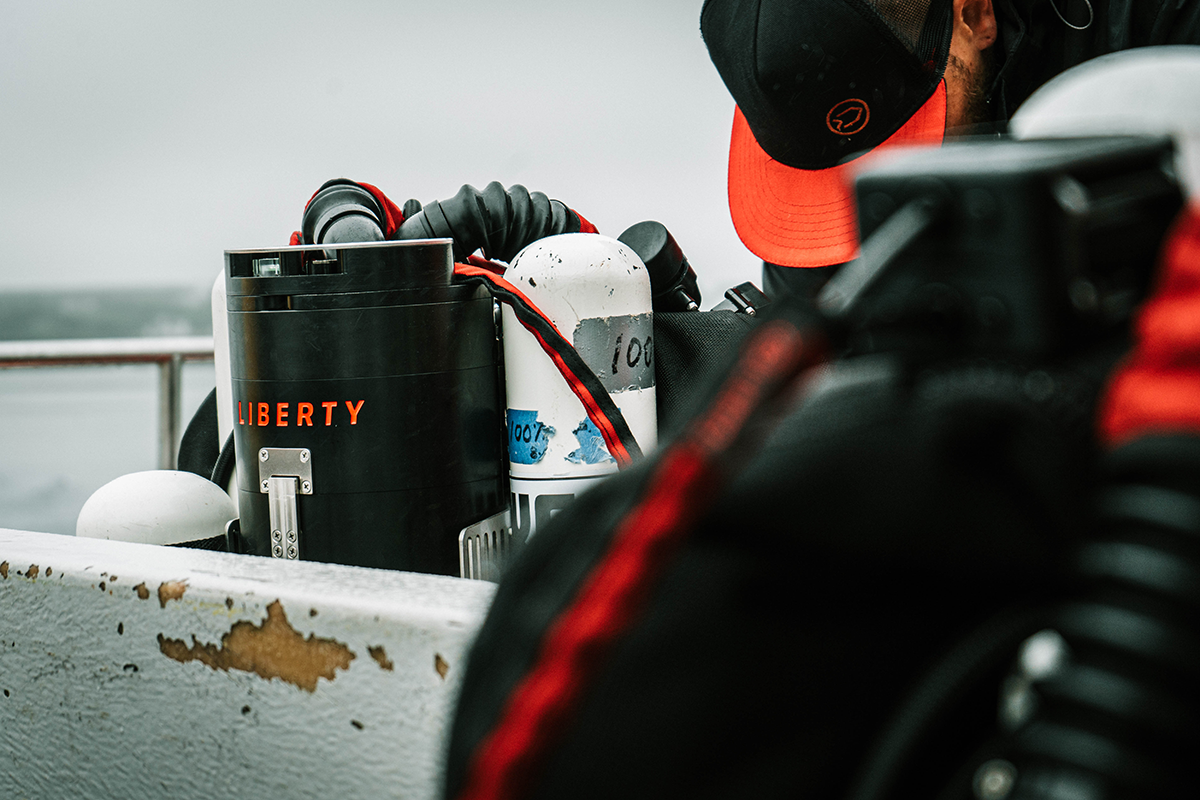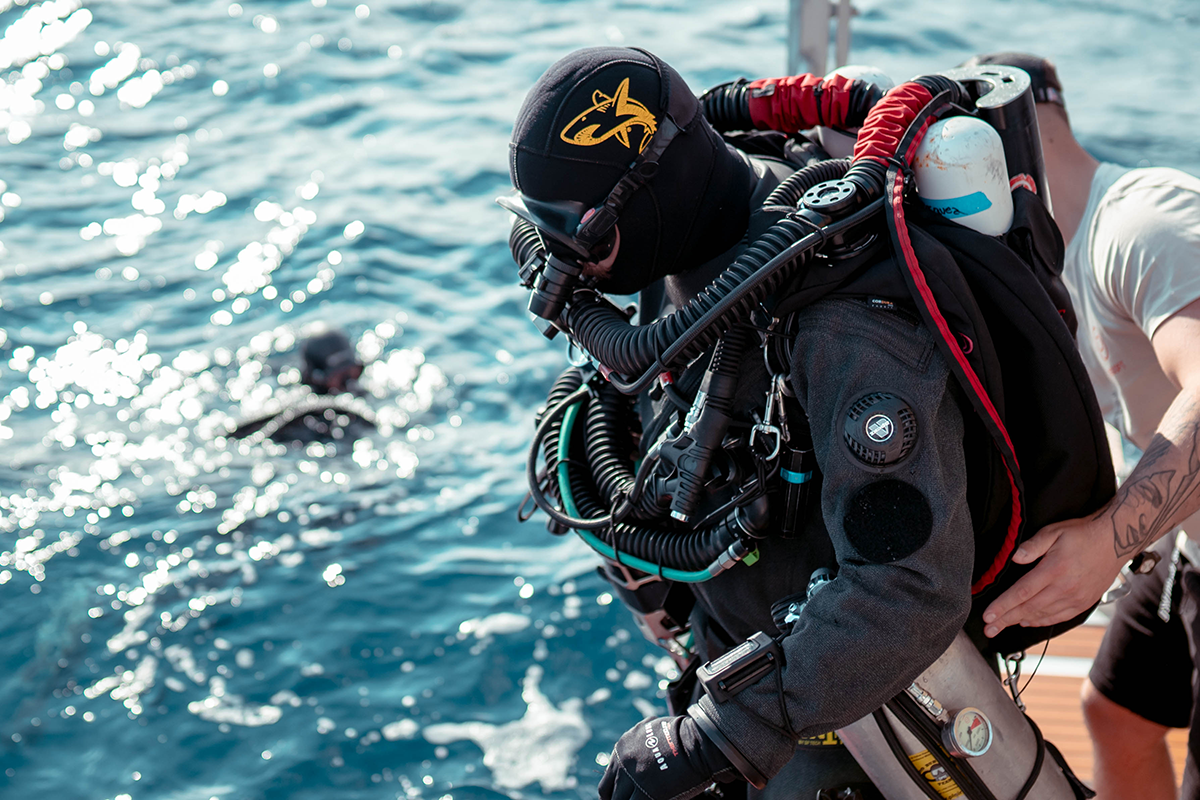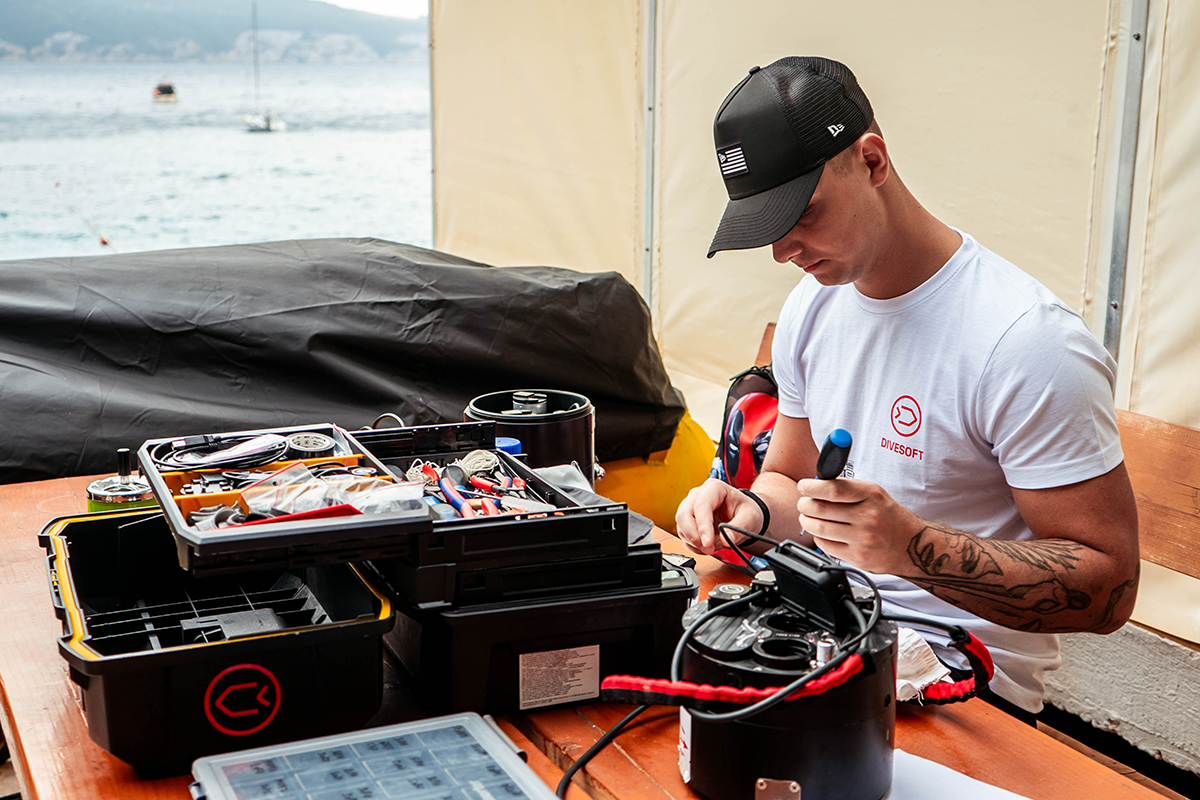7 steps to becoming a rebreather diver

Have you been thinking about joining the loop and becoming a rebreather diver? These steps will outline the tools you'll need to explore an underwater world without bubbles.
1. Motivation
If you're reading this article, you are probably already interested to learning more of what it takes to get a rebreather. There are many reasons to get a closed-circuit rebreather. It could be greater dive and decompression efficiency, gas savings, deep dives, long cave dives, silence, or simply because you're a big fan of technology and want to treat yourself to something better.
Honestly, you don't really need to have a rational reason to justify getting a rebreather. People also don't get expensive and fast cars or motorbikes just to be faster at work. We've all seen the amazing photographs of divers in extreme places with all the equipment. Other times rebreather divers look as if they are embarking on a space walk to the other side of the moon! Rebreathers do tie into our sense of adventure to go where few others have been. If you want to get a rebreather simply because it's cool, then have at it! But you may have to find some justification for your wife or husband.
The previous article can help you with that.

2. Experience
In the early days, rebreathers where reservered for the elite few and the extreme extreme divers. Nowadays, there are many opinions that you can begin with a rebreather with little to no experience. In my opinion, this is a mistake.
A rebreather is, after all, a significantly more complex system which requires the active engagement of the diver both in its preparation and during the dive itself. In order to feel safe and enjoy diving with a CCR, you need to already feel comfortable in the water and not be bothered by basic diving skills. Divers that are early in their career are getting used to the different aquatic environment, reduced visibility, moving underwater, basic equipment control and buoyancy.
By the time you strap on a rebreather, you must have mastered these skills to the point that they are second nature. If you are overzealous in moving quickly to CCR without mastering the basics of diving itself, you may become quickly overwhelmed, making it easy to miss important steps or warnings. This can have really serious consequences and has happened more than once.
Universally, experience is expressed in terms of the number of dives, but it is clear to everyone that this can be very individual as not all dives are the same. The entry requirements of training agencies into CCR courses vary widely and range from 18 to 100 dives. I find the lower end of that range to be totally inadequate.
I'm willing to concede that it may be satisfactory for a discovery dive, since you are in a safe environment under the supervision of an experienced instructor the entire time. However, an independent CCR diver course should only come into play when I am able to move reliably and safely underwater, the drills learned in the OWD and AOWD courses are a non-encumbering routine for me, and I can perform them anywhere and anytime regardless of the environment I am diving in.
A very important skill that I think should be mastered at least at a basic level is carrying and using a stage cylinder. When diving with a rebreather, you will always need a bailout cylinder, which is a gas supply in a regular open circuit dive cylinder that differs little from a stage cylinder. If you already enter the CCR course with this experience, you will be able to focus on the rebreather diving itself and the bailout cylinder will be a given that will already feel natural to the diver and require no additional attention.
If you follow the above recommendations and consider your own experience, you will probably come to the conclusion that 18 dives is insufficient in any case, and we will be more likely to be somewhere around that 100 dives in reality. Divers with this number of dives are more experienced, they know their way around the water, the basic exercises are not difficult for them, and they have probably already had some close calls that gave them valuable experience and respect.
Some training organizations even offer the opportunity to begin an OWD course right away at a recreational rebreather. This idea is an interesting one and relies on divers learning everything straight from the start, so they won't struggle with learning everything from scratch when they move on to a rebreather. But the arguments I made earlier tend to refute this claim. A diver has to learn with an open circuit anyway, because they will be switching to an open circuit in an emergency situation. So, if we wanted to teach a diver everything honestly and from scratch, then we would have to take him through all the skills and such a course would be very long and therefore very expensive. If someone offers you a quick and easy solution, beware. There are no shortcuts to the top.

3. Training and certification
As indicated in the previous section, a critical prerequisite for becoming a rebreather diver is training with the specific device and certification from a recognized training agency. Without this, it is not possible to buy the device at all. All rebreather manufacturers either sell their devices directly through instructors or want to at least provide proof of successful completion of training.
There is no universal training. There is specific training for each type of apparatus and your certification card will have the type of apparatus you are trained for marked on it. I will cover the training, its requirements and instructor selection in detail in my next article. Specific training of each unit comes to the fact that each unit has critical components that differentiate them that require different techniques to build and dive them. Enough that specific training is required.

4. The unit
Do I have to get a rebreather if I want to start rebreather diving? Can't I rent one somewhere? Of course, you can, although these are rather exceptions. However, any instructor will tell you in a course that once you start diving on a rebreather, you should already be diving primarily on a rebreather.
It's like flying. If you don't take enough hours a year, you lose the habits you've learned and the safety of CCR diving decreases rapidly. If you only have the device on loan occasionally, you'll have a hard time taking it on every dive and a hard time gaining the necessary experience and habits.
So, if I may recommend, if you decide to go the rebreather diving route, you need to own your own apparatus. If you want to become a rebreather diver, best you own a rebreather. You can, of course, go about it the right way, and take several training courses for different apparatus before you choose to buy the one that suits you best. This is an honest, albeit, long and expensive journey. I've personally encountered this approach, and the person who went through it this way was certainly no beginner, but a world-renowned cave diving expert.

5. Additional equipment
If you are to become a rebreather diver, then you will be needing to get a rebreather. From this, it is safe to assume that you already have all your basic diving equipment. Of course, you can't do without a suitable exposure suit, ABCs and other elementary items of equipment.
What may be new to you, however, is a bailout cylinder with an appropriate regulator. A bailout cylinder, as I've already written, is not much different from a stage cylinder. There are some differences, though. While stage cylinders for technical open circuit diving are almost exclusively recommended in aluminium, steel cylinders are not taboo for bailout cylinders either. A properly selected lightweight steel cylinder will always be more compact than an aluminium one, will not change its buoyancy significantly, and most importantly, will hold more gas because we can pressurize it a bit more than an aluminium one.
The rigging of such a cylinder is becoming more and more like a sidemount cylinder rather than a traditional stage cylinder. Divers secure them with a bolt snap on the bottom, and a bungee cord around the top end around the valve from the divers harness. This allows the bottle to be carried much closer to the diver without it constantly bobbing and clinking under the diver's body. The biggest benefit is a more streamline profile, which will make swimming much easier.
The bailout cylinder regulator is also slightly different from a traditional stage regulator. In addition to the second stage and pressure gauge, the first stage is also equipped with a medium pressure hose with an inflator bayonet quick connector. The latter is used when I need to supplement gas from an external cylinder because the rebreather cylinder is empty, has a valve failure, or I just want to save gas in the on-board rebreather cylinder.
The length of the regulator's medium pressure hose remains the same as the classic stage, i.e. 100 cm (40 inch). We need to be able to run it comfortably behind the neck from left to right and into the mouth. If we have a second stage permanently placed by a rubber band around the neck for immediate switching to the open circuit, then the regulator must be equipped with an additional second stage in case of providing gas to a partner in an emergency.

6. The will and determination to maintain the device regularly
Taking care of the rebreather is essential for its perfect operation. I tell my students that 80% of dive safety is ensured on land before the dive, and unit preparation is the main component of land preparation. Caring for a rebreather involves a more complex assembly than is the case with a conventional scuba unit.
There is also the need to perform pre-dive tests, pre-breathing, and to clean the unit, disinfect the breathing loop and dry it out after the dive day. It's a bit more work that we must accept and not skip, even after many successful CCR dives. It's a tax on the amazing efficiency the apparatus brings us, and we must be willing to pay it if we want to keep the apparatus safe. Of course, regular annual servicing by service technicians or directly by the manufacturer is a must.

7. Decision
The most important thing at the end. By now you should be equipped with the basic information on what entering a bubble-free world entails and have the pros/cons are your disposal. The decision is up to you and you should consider all aspects carefully.
Expect that, in addition to the purchase price, you will be forced to invest annually in replacing oxygen sensors, and you will use 2.5 kg of sorbent for every 6 hours or so of diving. These are things that must not be skipped and must therefore be taken into account. Nevertheless, I believe that the benefits of CCR are so great that the cost of acquiring and operating it easily outweighs them.
I hope this article has helped you make a better decision in whether to get a rebreather. In any case, feel free to contact us with any additional questions at info@divesoft.com.
- Jakub Šimánek, Divesoft Factory IT
Divesoft.app
Plan your decompression, gasses, utilize checklists, check your logs + more!!
All for Free.

